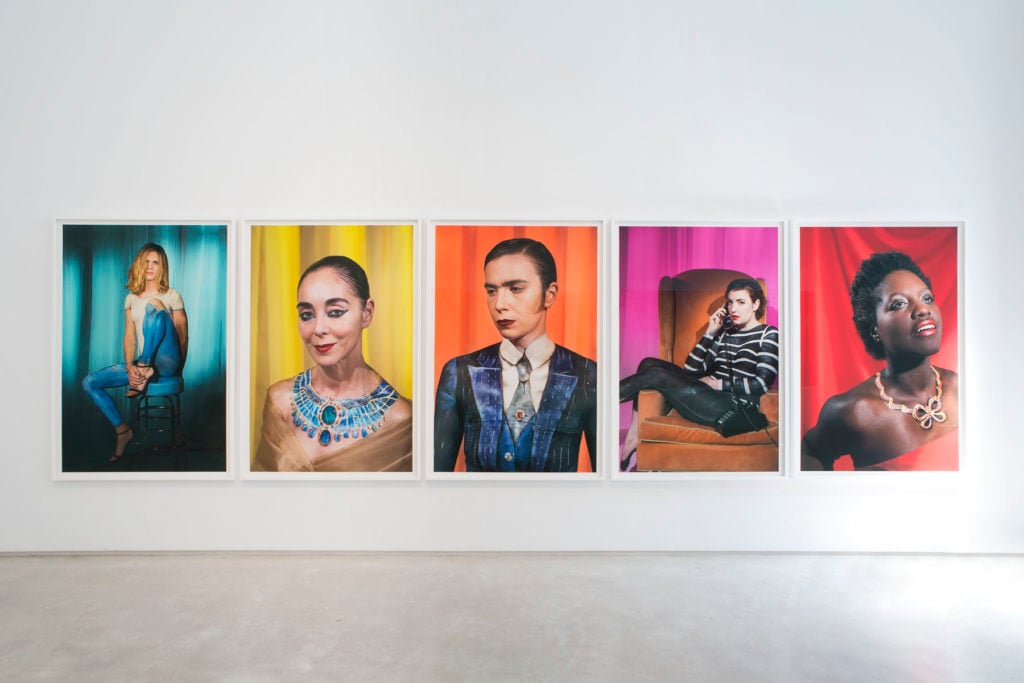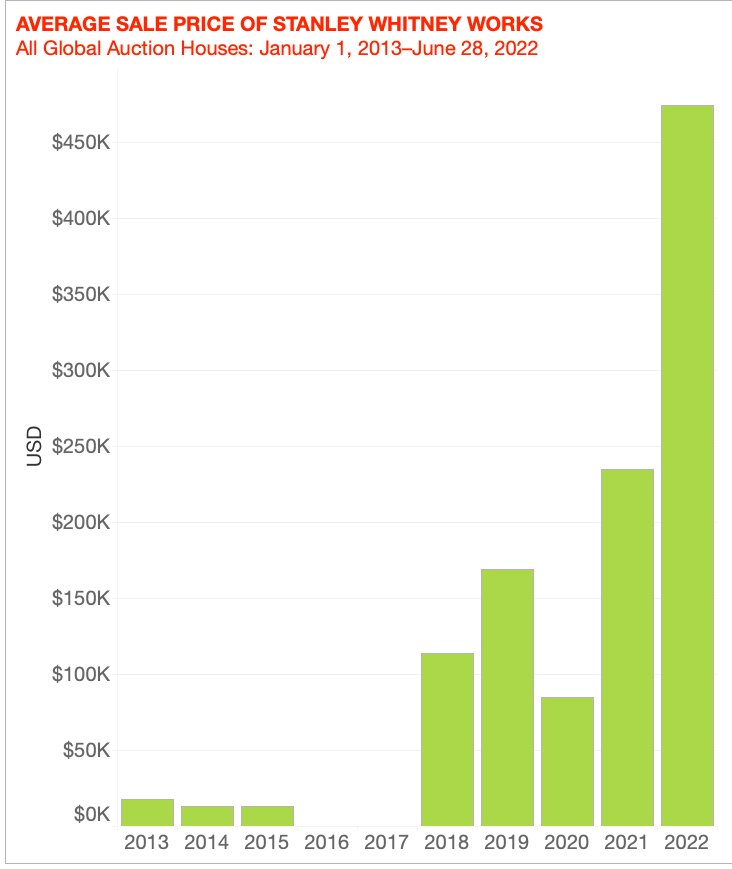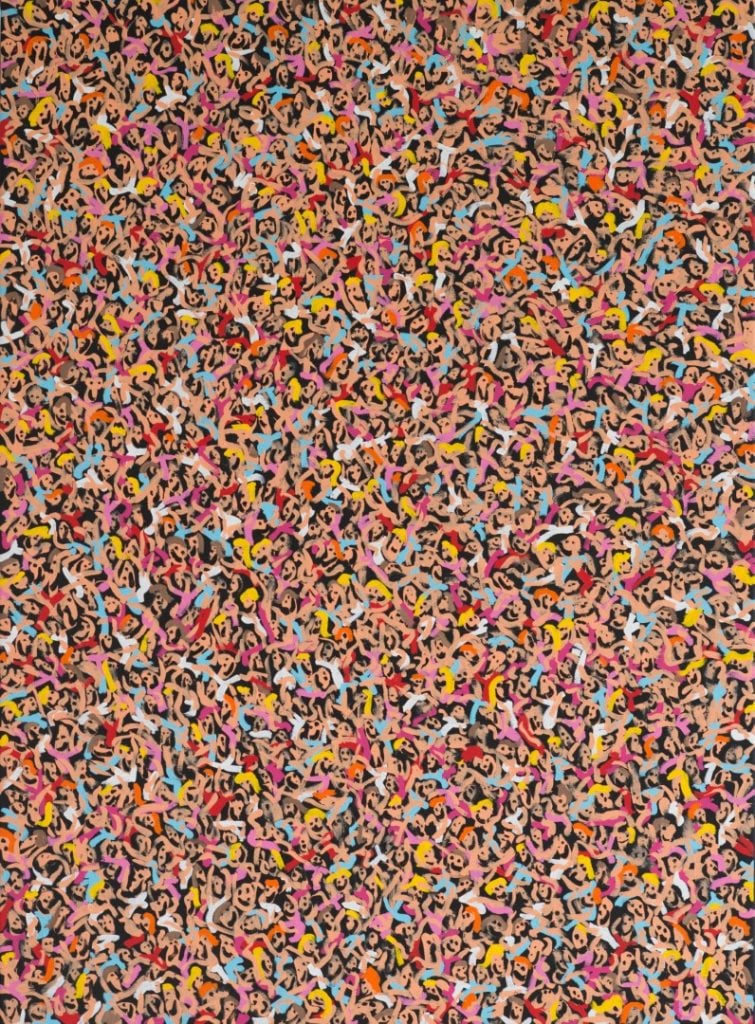The Back Room
The Back Room: Generation Gap
This week: age-based divides among women artists, Stanley Whitney’s sharp ascent, a Belgian newbie bubbles up, and much more.

This week: age-based divides among women artists, Stanley Whitney’s sharp ascent, a Belgian newbie bubbles up, and much more.

Tim Schneider &
Naomi Rea

Every Friday, Artnet News Pro members get exclusive access to the Back Room, our lively recap funneling only the week’s must-know intel into a nimble read you’ll actually enjoy.
This week in the Back Room: age-based divides among women artists, Stanley Whitney’s sharp ascent, a Belgian newbie bubbles up, and much more—all in a 6-minute read (1,630 words).
__________________________________________________________________________

Installation view of “Laurie Simmons 2017: The Mess and Some New” at Salon 94 Bowery. Photo courtesy of Salon 94.
If you’ve been hoping for a narrowing of the gulf between how male and female artists’ works perform at auction, we have good news and bad news for you.
The good news? Since 2017, younger women artists have made dramatic strides toward gender parity within their age cohort.
The bad news? Works by men have still made up a disproportionately hefty share of auction sales no matter how else you slice the data. Worse, the power surge by younger women artists has not passed through to their critically renowned elders, who remain almost invisible to most bidders.
For a recent column, Katya pulled auction data from 2017 through June 2022 for two age groups of female artists: those born between 1930 and 1974, and those born since 1975 (aka the ultra-contemporary period). First, she compared each age group’s sales to its male counterpart; then she looked at how the two generations of women fared relative to one another.
The gender face-off yielded the only measured signs of progress. According to the Artnet Price Database, over the sample period…
The most revealing insights came from Katya’s comparison between the two generations of women. “The results are shocking,” she wrote, “not because the younger generation does not deserve success, but because of just how undervalued their predecessors are.”
There is no better way to crystallize age’s impact on bidding than to pair up the outcomes of specific women artists born on opposite sides of 1975. For starters, consider Mary Heilmann (b. 1940) and Allison Zuckerman (b.1990).
Heilmann’s C.V. stretches to 59 pages, her work has been collected by more than 40 museums, and over the past five and a half years, her auction sales totaled $3.8 million.
Those results put Heilmann just $400,000 ahead of the $3.4 million paid for lots by Zuckerman, who has yet to garner her first major museum solo show.
Other direct comps are just as telling…
These close-ups foretell the widescreen view: total sales by women in the ultra-contemporary segment rose more than 800 percent since 2017; for women born between 1930 and 1974, sales rose just 65 percent.
__________________________________________________________________________
Primary-market prices and demand may tell a different story about how buyers value women artists across generations. But private collectors and museums often use auction prices as a benchmark to determine how much they should pay—and whether an artist’s work is worth acquiring at all.
This dynamic puts canonical women artists in a double bind. It isn’t just that their prices may never catch up to those of their male peers. The new data suggests that their prices might forever trail those of their female successors, too (or at least those who endure for the long haul).
Both discrepancies would only perpetuate the industry’s relative disregard for the pivotal women artists born in the mid-20th century. For now, the situation creates a golden opportunity for true connoisseurs and buyers hunting undervalued assets. For everyone else, it just creates a damn shame.
____________________________________________________________________________

Joe Carollo. (Photo by Joe Raedle/Getty Images)
Today’s forthcoming Wet Paint will detail a heated battle between a Miami politician and local residents over the type (and arguably, quality) of public art destined for the grounds outside the Pérez Art Museum, plus Annie’s psychedelic escapades on Coney Island with artist, D.J., and nightlife promoter Spencer Sweeney.
Here’s what else made a mark around the industry since last Friday morning…
Art Fairs
Auctions
Galleries
Institutions
NFTs and More
____________________________________________________________________________

© 2022 Artnet Worldwide Corporation.
For proof that the market of septuagenarian abstract painter Stanley Whitney has been climbing fast, all you really need is the recent announcement that he has joined the roster at Gagosian. But the data tells an even richer story about the artist’s late-career spike…
Click through for more on Whitney’s most sought-after works, where there is still opportunity to buy, and whether his market boom will survive a wider market recalibration.
____________________________________________________________________________
“The problem with privatizing the sale of dinosaur remains is that it removes them from the labs of scientific researchers. The issue with selling them in art auctions is that it’s stupid.”
—Kenny Schachter on the $12.4 million sale of “Hector,” allegedly the most complete Velociraptor skeleton known to humankind, during Christie’s marquee evening art auctions in New York in May. (Artnet News Pro)
____________________________________________________________________________

Albert Willem, Party Times 2 (2020). Courtesy of Sotheby’s.
____________________________________________________________________________
Estimate: £10,000 to £15,000 ($12,159 to $18,239)
Sold for: £176,400 ($214,494)
Sold at: Sotheby’s London
Sale Date: June 30
Ten bidders from Europe, Asia, and the U.S. drove this colorful crowd scene by little-known Brussels-based painter Albert Willem to nearly 12X its upper estimate during Sotheby’s Modern and contemporary day sale in London last week. The result isn’t an outlier, either.
Three of Willem’s canvases have crossed the auction block in London since May 2022. All carried identical £15,000 ($18,219) high estimates; all have now sold for at least £100,800 ($126,047) after fees. If you’re wondering why, part of the answer seems to be that escapism sells.
According to the artist’s website, Willem (b. 1979) “intentionally avoids heavy or profound themes.” He never went to art school and has only been painting for about four years, largely taking his inspiration from Instagram. He also recently secured representation from New York gallery Waterhouse and Dodd (which just exhibited at Masterpiece London).
Sotheby’s head of sale Antonia Gardner described Willem’s works as “bright, eccentric, [and] playful,” adding, “They make you smile and undoubtedly carry an energy that emanates from these imagined stories.” It looks like the price of that particular energy is rising fast, too.
____________________________________________________________________________